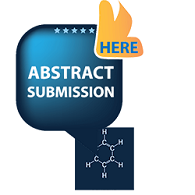
Dr. Mustapha Hidouri
Gabes University, Tunisia
Title: Hydroxyapatite bioceramics doped with ions for orthopedic and dentistry surgery
Biography
Biography: Dr. Mustapha Hidouri
Abstract
Bioceramics designed to replace failing bone, teeth and dentins have two important properties: biocompatibility and the ability to absorb at a rate comparable to bone growth. Because of its close similarity to the inorganic mineral components of the bone and teeth, calcium phosphate, and particularly hydroxyapatite (HAp, Ca10(PO4)6OH2), is the most widely used bioceramics in a variety of biomedical applications, most notably orthopedics and dental repair. Indeed, due to the complexity of the chemistry of bone and dentine, which contain multiple elements, no identical to natural material has been discovered. All existing research has attempted to obtain the most comparable material. Several attempts have been made to introduce as many ions as possible into the structure of the HAp. As a result, magnesium Mg2+, strontium Sr2+, zinc Zn2+, sodium Na+, potassium K+, carbonates CO32-, fluorures F-, and chlorine ions Cl- have been incorporated into the apatite structure. Several techniques (DRX, FTIR, chemistry analysis, G-DTA, RMN 31P, Raman, SEM) were used to verify the purity of the materials and confirm the ions' incorporation into the structure. The materials were pressure-less sintered, and the densification conditions were optimized. The densest materials have also been mechanically characterized. The biological properties of dense bodies have been tested in vitro, and the bioactivity and biocomtability of the materials have been determined. In the final stage, the appropriate materials were tested in vitro for their potential use as implants.

